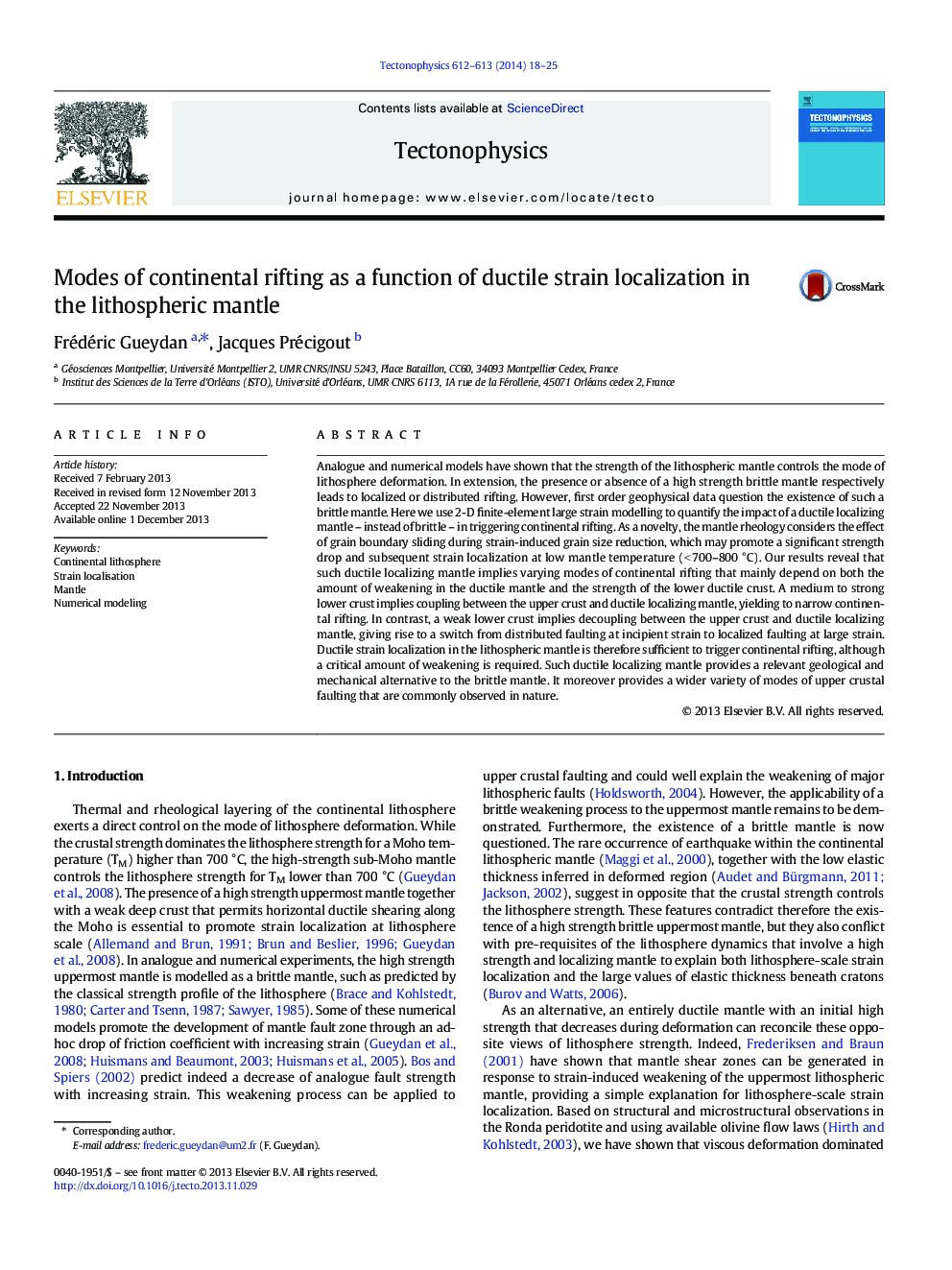| Article ID | Journal | Published Year | Pages | File Type |
|---|---|---|---|---|
| 4692075 | Tectonophysics | 2014 | 8 Pages |
•We model narrow continental rifting with a ductile localizing mantle.•Strain localizing at lithosphere scale is triggered by mantle grain size reduction.•The amount of weakening in the upper mantle controls strain localization.•The ductile crust strength controls the style of upper crustal faulting.
Analogue and numerical models have shown that the strength of the lithospheric mantle controls the mode of lithosphere deformation. In extension, the presence or absence of a high strength brittle mantle respectively leads to localized or distributed rifting. However, first order geophysical data question the existence of such a brittle mantle. Here we use 2-D finite-element large strain modelling to quantify the impact of a ductile localizing mantle – instead of brittle – in triggering continental rifting. As a novelty, the mantle rheology considers the effect of grain boundary sliding during strain-induced grain size reduction, which may promote a significant strength drop and subsequent strain localization at low mantle temperature (< 700–800 °C). Our results reveal that such ductile localizing mantle implies varying modes of continental rifting that mainly depend on both the amount of weakening in the ductile mantle and the strength of the lower ductile crust. A medium to strong lower crust implies coupling between the upper crust and ductile localizing mantle, yielding to narrow continental rifting. In contrast, a weak lower crust implies decoupling between the upper crust and ductile localizing mantle, giving rise to a switch from distributed faulting at incipient strain to localized faulting at large strain. Ductile strain localization in the lithospheric mantle is therefore sufficient to trigger continental rifting, although a critical amount of weakening is required. Such ductile localizing mantle provides a relevant geological and mechanical alternative to the brittle mantle. It moreover provides a wider variety of modes of upper crustal faulting that are commonly observed in nature.
